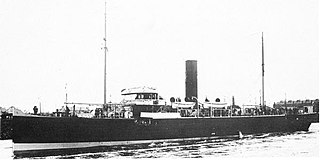
Q-ships, also known as Q-boats, decoy vessels, special service ships, or mystery ships, were heavily armed merchant ships with concealed weaponry, designed to lure submarines into making surface attacks. This gave Q-ships the chance to open fire and sink them.

The Royal Norwegian Navy is the branch of the Norwegian Armed Forces responsible for naval operations of Norway, including those of the Norwegian Coast Guard. As of 2008, the Royal Norwegian Navy consists of approximately 3,700 personnel and 70 vessels, including 4 heavy frigates, 6 submarines, 14 patrol boats, 4 minesweepers, 4 minehunters, 1 mine detection vessel, 4 support vessels and 2 training vessels.
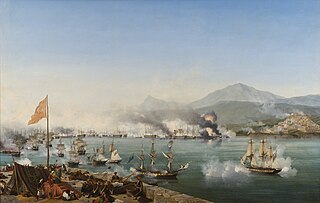
The Battle of Navarino was a naval battle fought on 20 October 1827, during the Greek War of Independence (1821–29), in Navarino Bay, on the west coast of the Peloponnese peninsula, in the Ionian Sea. Allied forces from Britain, France, and Russia decisively defeated Ottoman and Egyptian forces which were trying to suppress the Greeks, thereby making Greek independence much more likely. An Ottoman armada which, in addition to Imperial warships, included squadrons from the eyalets of Egypt and Tunis, was destroyed by an Allied force of British, French and Russian warships. It was the last major naval battle in history to be fought entirely with sailing ships, although most ships fought at anchor. The Allies' victory was achieved through superior firepower and gunnery.

The Battle of Dogger Bank was a naval engagement during the First World War that took place on 24 January 1915 near the Dogger Bank in the North Sea, between squadrons of the British Grand Fleet and the Kaiserliche Marine. The British had intercepted and decoded German wireless transmissions, gaining advance knowledge that a German raiding squadron was heading for the Dogger Bank and ships of the Grand Fleet sailed to intercept the raiders.

A fire ship or fireship is a large wooden vessel set on fire to be used against enemy ships during a ramming attack or similar maneuver. Fireships were used to great effect against wooden ships throughout naval military history up until the advent of metal-hulled ships; they could also serve a considerable function in shock and awe strategies to harm the morale of enemy crews. Ships used for fireship tactics were sometimes surplus, obsolete or purpose-build vessels filled with gunpowder or other combustibles, but could also be improvised from active warships purposefully set on fire during engagements, such as if a vessel expended its munitions or had some other reason to be abandoned in battle.
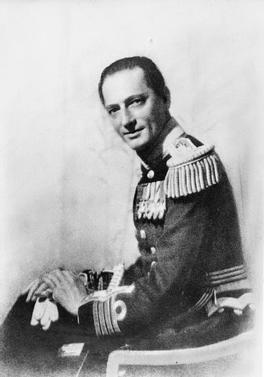
Augustus Willington Shelton Agar, was a Royal Navy officer in both the First and the Second World Wars. He was a recipient of the Victoria Cross, the highest award for gallantry in the face of the enemy that can be awarded to British and Commonwealth forces, for sinking a Soviet cruiser during the Russian Civil War.
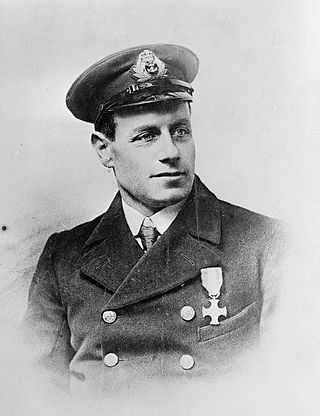
Thomas Crisp VC, DSC, RNR was an English sailor and posthumous recipient of the Victoria Cross. Crisp, in civilian life a commercial fisherman operating from Lowestoft in Suffolk, earned his award after being killed during the defence of his vessel, the armed naval smack Nelson, in the North Sea against an attack from a German submarine in 1917.

Leif Andreas Larsen DSO, DSC, CGM, DSM and Bar, popularly known as "Shetlands Larsen", was a highly decorated Norwegian sailor. He was arguably the most famous of the men who operated the Shetland bus escape route during the war.

The Shetland Bus was the nickname of a clandestine special operations group that made a permanent link between Mainland Shetland in Scotland and German-occupied Norway from 1941 until the surrender of Nazi Germany on 8 May 1945. From mid-1942, the group's official name was the Norwegian Naval Independent Unit (NNIU). In October 1943, it became an official part of the Royal Norwegian Navy and was renamed the Royal Norwegian Naval Special Unit (RNNSU). The unit was operated initially by a large number of small fishing boats and later augmented by three fast and well-armed submarine chasers – Vigra, Hessa and Hitra.

Strasbourg was the second and final member of the Dunkerque class of fast battleships built for the French Navy in the 1930s. She and her sister ship Dunkerque were designed to defeat the German Deutschland class of heavy cruisers that had been laid down beginning in the late 1920s, and as such were equipped with a battery of eight 330 mm (13 in) guns to counter the six 280 mm (11 in) guns of the Deutschlands. Strasbourg was laid down in November 1934, was launched in December 1936, and was commissioned in September 1938 as the international situation in Europe was steadily deteriorating due to Nazi Germany's increasingly aggressive behavior.

HMS Graph was a German Type VIIC U-boat captured and recommissioned by the British Royal Navy during World War II.

The scuttling of the French fleet at Toulon was orchestrated by Vichy France on 27 November 1942 to prevent Nazi German forces from seizing it. After the Allied invasion of North Africa, the Germans invaded the territory administered by Vichy under the Armistice of 1940. The Vichy Secretary of the Navy, Admiral François Darlan, defected to the Allies, who were gaining increasing support from servicemen and civilians. His replacement, Admiral Gabriel Auphan, guessed correctly that the Germans intended to seize the large fleet at Toulon, and ordered it scuttled.

The Adriatic Campaign of World War I was a naval campaign fought between the Central Powers and the Mediterranean squadrons of Great Britain, France, the Kingdom of Italy, Australia, and the United States.
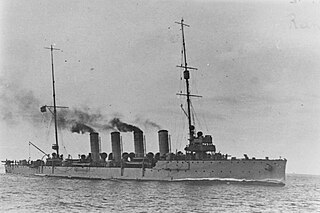
SMS Novara was a Novara-class scout cruiser of the Austro-Hungarian Navy which served during World War I. Built by the Danubius shipyard between December 1912 and January 1915, Novara was the third and final member of her class to enter service, some six months after the start of the war. She was armed with a battery of nine 10-centimeter (3.9 in) guns and had a top speed of 27 knots.
Vorpostenboot, also referred to as VP-Boats, flakships or outpost boats, were German patrol boats which served during both World Wars. They were used around coastal areas and in coastal operations, and were tasked with – among other things – coastal patrol, ship escort, and naval combat.

The Royal Navy, commonly the Royal Yugoslav Navy, was the naval warfare service branch of the Kingdom of Yugoslavia. It was brought into existence in 1921, and initially consisted of a few former Austro-Hungarian Navy vessels surrendered at the conclusion of World War I and transferred to the new nation state under the terms of the Treaty of Saint-Germain-en-Laye. The only modern sea-going warships transferred to the new state were twelve steam-powered torpedo boats, although it did receive four capable river monitors for use on the Danube and other large rivers. Significant new acquisitions began in 1926 with a former German light cruiser, followed by the commissioning of two motor torpedo boats (MTBs) and a small submarine flotilla over the next few years. When the name of the state was changed to Yugoslavia in 1929, the name of its navy was changed to reflect this. In the late 1920s, several of the original vessels were discarded.
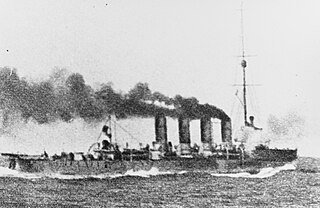
The Battle of the Strait of Otranto of 1917 was the result of an Austro-Hungarian raid during the Adriatic Campaign of World War I on the Otranto Barrage, an Allied naval blockade of the Strait of Otranto. The battle took place on 15 May 1917, and was the largest surface action in the Adriatic Sea during World War I. The Otranto Barrage was a fixed barrier, composed of lightly armed naval drifters with anti-submarine nets coupled with minefields and supported by Allied naval patrols.
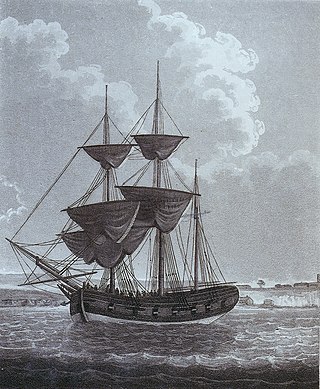
HMS Wolverine, was a Royal Navy 14-gun brig-sloop, formerly the civilian collier Rattler that the Admiralty purchased in 1798 and converted into a brig sloop, but armed experimentally. She served during the French Revolutionary Wars and participated in one action that won for her crew a clasp to the Naval General Service Medal. A French privateer captured and sank Wolverine on 21 March 1804 whilst she was on convoy duty.
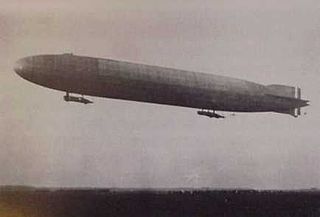
Zeppelin LZ 54, given the military tactical designation L 19, was a Zeppelin of the Imperial German Navy. While returning from her first bombing raid on the United Kingdom in early 1916, she came down in the North Sea. Her crew survived the crash, but drowned after the crew of a British fishing vessel refused to rescue them; at the time this was a widely reported and notorious incident.

Quarto was a unique protected cruiser built by the Italian Regia Marina in the 1910s. Her keel was laid in November 1909, she was launched in August 1911, and was completed in March 1913. She was the first Italian cruiser to be equipped with steam turbines, which gave her a top speed of 28 knots. Her high speed was a requirement for the role in which she was designed to serve: a scout for the main Italian fleet.



















